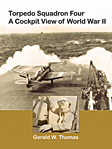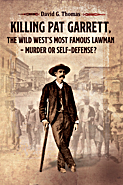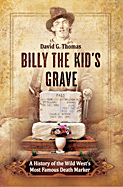 |
 |
 |
 |
 |
 |
 |
 |
 |
 |
 |
 |
 |
 |
|
|
|
 |
|
Dedicated to those who
served in VT-4, VB-4, VF-4,
VMF-124 and VMF-213
|
|
|
|
|
Articles
|
|
|
|
Air Group 4
|
|
|
|
Action on the USS Ranger (CV-4) -- From the Journal of a Signalman
Ernest L Crochet`s journal notes constitute one of the most complete records of action aboard an aircraft carrier available from World War II. He is meticulous in describing USS Ranger Task Force assignments, operational aircraft accidents, submarine encounters, combat situations, and routine patrols.
|
|
|
|
Ranger Air Group Over Casablanca - OPERATION TORCH
On November 8, 1942, the USS Ranger joined the escort carriers Santee, Suwanee, Sangamon, and Chenango in the North African campaign called OPERATION TORCH. At the time, this Anglo-American operation was the most ambitious naval operation yet conducted in the European-African theater.
|
|
|
|
"Bring Back the Handles"
One target of OPERATION TORCH was the French Vichy Battleship Jean Bart. In spite of numerous bombings, it was unclear whether the Jean Bart was damaged. Bill Wade was assigned to take photographs for analysis. His photos solved the mystery of the apparently indestructible battleship, and later appeared in LIFE Magazine as one of the best combat photos of the war.
|
|
|
|
Von Bulow Decorated for Sinking USS Ranger
On April 25, 1943, U-boat commander Otto Von Bulow reported sinking the USS Ranger. For this action, Von Bulow was decorated by Hitler. The problem, for Von Bulow and Germany, was that the USS Ranger was never attacked by Von Bulow.
|
|
|
|
Captain Gordon Rowe Interview
On February 15, 1944, Captain Gordon Rowe, Commander of the USS Ranger, was interviewed by Quentin Reynolds for the CBS radio program "Report to the Nation." Here is the text of that interview.
|
|
|
|
WWII Dive Bomber Found in Placentia Bay, Newfoundland
In 1974 the wreckage of an SBD was salvaged in Placentia Bay, Newfoundland. Here are the photos. Whose plane was it? Research has determined that it was Lt Cdr "Otto" Klinsmann´s plane, which crashed during takoff from the Ranger on July 24, 1943.
|
|
|
|
Preparing for Combat in the Pacific
Air Group 4 lost more men from operational accidents during its tour of duty in the North Atlantic than it did from combat. These journal notes by Gerald Thomas provide details on these losses, and show his efforts to balance strenuous wartime activities with the desire to capitalize on every hour of liberty.
|
|
|
|
Marines´ Flaming Hell on Iwo
Here is Times War Correspondent Kyle Palmer´s account of the attack on Iwo Jima on February 25, 1945. He relates his "bird´s eye view" of the battle from an airplane off an unnamed carrier (the USS Essex). The plane was piloted by Lt P. P. Stephens, VF-4.
|
|
|
|
Suicide Tactics: The Kamikaze During WWII
The terrorist attacks of September 11, 2001 have reminded us of the terrible damage done by Kamikazes in WWII. This toll included 120 US ships sunk, 3,048 allied sailors killed, and 6,025 sailors wounded. As related here, Gerald W. Thomas had 3 "rather personal" experiences with suicide bombers.
|
|
|
|
History of USS Ranger (CV-4)
Published by the Navy Department in 1948, this Office of Public Information release gives a detailed history of the USS Ranger. This history was released after the Ranger was stricken and disposed of by sale through Surplus Property Office in January 1947.
|
|
|
|
Airmen Missing in Action and Prisoners of War from Air Group 4
Air Group 4 lost airmen in combat and as prisoners of war. This is a partial report on these men with post-war information when available. Please notify us of additional information you may have on these men. It is important that due recognition be given to those who paid the supreme sacrifice in the service of our country.
|
|
|
|
Food Will Win the War -- And Shape the Peace that Follows
Wartime food policies required sacrifice by civilians at home and increased production by US farmers and ranchers. As a strategic element, it was also essential to deny food stores and production to Axis powers as much as possible. After the war, American policy shifted to helping our former enemies feed their ravaged populations.
|
|
|
|
VT-4 Simulation for CFS2
Stavros Andreou has created a VT-4 simulation package for Microsoft´s Combat Flight Simulator 2 (CFS2) program. This package, which features 39 missions and 5 custom aircraft images, is described here.
|
|
|
|
Torpedo 4
|
|
|
|
GQ Jitters - Daily Journal of a VT-4 Crewman
A collection of entries from Charlie C. Statler's journal of Torpedo Four's tour of duty in the Pacific. By recording the basic events with no elaboration, Charlie provides a dramatic summary of squadron and ship activities between November 11, 1944 and March 3, 1945.
|
|
|
|
Memories
Lawrence L. "Ham" Hamrick reported for duty with VT-4 on February 10, 1943. He was promoted to Executive Officer when the Squadron returned to the States following operations in the North Atlantic. Ham was decorated for action in both the Atlantic and the Pacific Theaters. Pilots and crewmen alike respected his abilities as a pilot and a squadron leader.
|
|
|
|
Saigon Takes Its Toll: A Follow Up
On January 12, 1945, the VT-4 Avenger flown by Lt(jg) Donald A. Henry with Ellsworth A. Shirley as turret gunner was reported MIA during STRIKE BAKER, an operation to attack air facilities, shipping, and shore installations in Saigon Harbor. Recent investigations have finally revealed the fate of Henry and Shirley.
|
|
|
|
The Day O´Mary Died
Lt (jg) George W. O´Mary was killed in a freakish accident in which his own depth charges exploded after his TBM Avenger crashed on takeoff from the USS Ranger. Here´s Hampton "Hamp" Creel´s recollection of the incident.
|
|
|
|
Back to Deadwood After Two Wars
Robert F. Ruth joined VT-4 on February 2, 1943 and served with the squadron until its retirement in April, 1944. In 1952 he was recalled to active duty to fight in the Korean War. A section leader of VT-4 in the Pacific during WWII, Ruth was in VS-25 during the Korean War, and became Executive Officer of the squadron in mid-1954.
|
|
|
|
I Chose the TBM!
James F. "Frosty" Ballard joined the Navy in April, 1942 and VT-4 in December, 1943. He flew with Robert Ruth as gunner and radioman in both the Atlantic and the Pacific theaters.
|
|
|
|
The Best Section in Torpedo 4
Page P. Stephens flew with VT-4 in both the Atlantic and Pacific theaters. As a section leader in the Pacific, he lead strikes on Ormoc Bay, Cavite, Manila Harbor, Santa Cruz, Formosa, Okinawa, Iwo Jima, and other targets. He considered his section the "best" in Torpedo 4.
|
|
|
|
A Radioman Becomes a Torpedo Pilot
Enlisting in December, 1941, Lloyd A. "Cozy" Cole was first assigned to VT-4 as a radioman. After his application to Flight School was accepted, he returned to the States and trained as a pilot. Imagine his surprise when he was assigned back to VT-4 as a pilot! As he says, "I don't know anyone else who has had the pleasure of being in the same squadron as both aircrewman and pilot."
|
|
|
|
Norway to Tokyo
Donald M. Applegate served with Torpedo 4 from Norway to Tokyo, putting in 589 flying hours and 71 carrier landings with the squadron. He and pilot Felix E. Ward were in their torpedo-loaded plane on the hanger deck when a kamikaze struck the USS Essex.
|
|
|
|
A Country Kid Joins the Navy
The second military draft occurred on August 1, 1941. A lottery of all eligible men was held by each draft board to determine who would be drafted. Gerald Max "Buck" Barnett made the headlines in his hometown--his name was the first to be drawn. Rather than be drafted as a foot soldier, he joined the Navy.
|
|
|
|
"A Gunner´s Vow"
Leo E. Halvorson enlisted in the Navy on October 30, 1942. Completing Air Gunners School in July 1943, he joined VT-4 and served on the Ranger, Bunker Hill, and Essex. While on the Essex, he was awarded the Air Metal and the Purple Heart, the latter for surviving an AA attack that blew a 2-1/2 foot hole in his plane´s right wing.
|
|
|
|
Living on Borrowed Time
With the exception of one brief encounter, Gene Ganley had seen none of the other members of Torpedo Four since the war, until he attended the reunion in Minneapolis, Minnesota. He recounts several war-time incidents that left him feeling he was lucky to survive.
|
|
|
|
From Boot Camp to World War II and Korea
From boot camp, David L. Huston went to radio school and then into aviation radio. One of 13 detailed to replace personnel lost in the first raid on Norway, he joined VT-4 in Scapa Flow, Scotland. He served with VT-4 throughout its action in the Pacific. In 1950 he was called back to fight in Korea and served 16 months.
|
|
|
|
The Navy Didn´t Need Plumbers
Burnie Dalton reflects on his years in Torpedo 4 and the comradeship among the men of VT-4 that no other squadron could compete with. Dalton logged about 400 hours flight time with VT-4 and flew with about every pilot in the squadron.
|
|
|
|
From World War II to the Cuban Missile Crisis
Howard J. Diemel enlisted in September 1942. During training he briefly met Ensign George Gay, the sole survivor of Torpedo Squadron 8. After the war, he remained in the reserve until retirement in 1964. He was called to active duty during the Korean War and scheduled for active duty during the Cuban Missile Crisis.
|
|
|
|
Electronics in VT-4
Mason A. Clark got into VT-4 because his childhood hero was Thomas Edison. This lead him to being a radio amateur and studying electrical engineering at Northwestern University's Technological Institute, what was interrupted by WWII. In the Navy, after additional study and some teaching, he joined VT-4 in 1944.
|
|
|
|
Remembering "The Candyman"
Ted Forsberg´s earliest childhood memory is of a photo of a very handsome young man in a brilliant white naval uniform with a pair of gold aviator wings on his chest. The photo was of Lt (jg) William H. "The Candyman" Canty, his uncle, who was lost in the Pacific in World War II. This article honors his uncle, who served in both VT-8 and VT-4.
|
|
|
|
Vertigo, the Expanding Square, and Combat Experiences
In this interview, Wilbur S. Souza recalls his pilot training and WWII experiences in Torpedo 4, including getting lost flying anti-sub patrol above the Arctic Circle. When flying an expanding square did not locate the carrier (which was operating under radio silence), the prospects for Souza and his crew appeared bleak.
|
|
|
|
In Keeping with the Highest Traditions
Charlie Joe Warrington enlisted in the US Navy on October 23, 1941. After various duties, including control tower operator, he joined Torpedo Four as in Hyannis, Massachusetts. He served with VT-4 on the USS Bunker Hill and the USS Essex, and received the Navy Air Metal for meritorious action in combat.
|
|
|
|
Lt(gj) Edward S. Binder
Edward S. Binder enlisted in the Navy after Pearl Harbor. In April, 1944, he joined VT-4 when it was reformed for duty in the Pacific. He flew combat missions from the USS Bunker Hill and the USS Essex. On January 16, 1945, he survived a splash down in the South China Sea after a strike on Hainan Island..
|
|
|
|
Remembering Frederick Howe, 1900-1944
Frederick "Fred" Howe, AMM3c was killed in an operational accident on May 9, 1944. Mason Clark records his memories of the tragic event and the Memorial Service, held May 21, 1944.
|
|
|
|
Three Photos
Several years ago a camera store owner gave Gary M. Chase three air-to-air photos of a TBM Avenger taken during WWII. The photos had been developed long after the war for a customer who brought in a forgotten used roll of film. Here are the photos and what additional information is currently known about them.
|
|
|
|
A Tribute to TBM Avenger Air Crewmen
The sacrifices, extraordinary courage, and discipline of the men who occupied the turret and belly positions of the Grumman TBF/TBM Avenger during WWII have never been properly acknowledged.
|
|
|
|
Bombing 4
|
|
|
|
A Few Things Remembered about Air Group 4 (Basically VB-4)
After completing a 5-month course in Aviation Radio, Lloyd Edens was assigned to the USS Ranger´s dive-bombing squadron (they called it a Scouting squadron then). Here are some of his memories of the early days of VB-4 and of OPERATION TORCH.
|
|
|
|
Aboard the Ranger and Beyond
On December 1, 1941, fresh out of Aviation Machinist Mate School, Tom Moore was assigned to Scouting Squadron 41 aboard the USS Ranger. This began a life-long career in aviation. His experiences on the Ranger during OPERATION TORCH and afterwards in aviation are recounted here.
|
|
|
|
Donald Dondero and Chester Knozek Bail-Out Over Manila Harbor
Bombing 4 pilot Don Dondero was shot down during Air Group 4´s attack on Manila Harbor, November 14, 1944. This is his story of bailing out, enduring several days and nights in a rubber boat, being rescued by Filipinos, and eventually making it back to the United States.
|
|
|
|
The Ring
On October 4, 1943, Lt(jg) Clyde A. Tucker, Jr was killed when his dive-bomber crashed into the sea near Bodø, Norway, after being hit by German anti-aircraft fire. Lt(jg) Tucker was wearing a ring given him on his 21st birthday by his Father. Today Clyde A. Tucker, III wears that ring. Here´s the story of that ring.
|
|
|
|
Fighting 4
|
|
|
|
The Lost Pilot/Artist
On March 1, 1945, on the last combat mission of Air Group 4, VF-4 pilot Douglas Raymond Cahoon was lost over Okinawa supporting the American pre-invasion of the island. Fighting 4 lost a seasoned veteran; the world lost a talented artist.
|
|
|
|
A Kamikaze, a Dogfight, a Splash-Down, and a Typhoon
In a 3-week period beginning November 25, 1944, VF-4 pilot Leonard A. Watson survived a Kamikaze, an attack by enemy Zekes, a splash-down and rescue, and a typhoon.
|
|
|
|
A Tribute to Lt Cdr Keene G. Hammond, Skipper of VT-4
Lt Cdr Keene G. Hammond was one of the original pilots assigned to Fighting Four when it was formed in December 1941. Lt Cdr Hammond saw duty on the USS Ranger in the Atlantic, and on the USS Bunker Hill and USS Essex in the Pacific.
|
|
|
|
Marine 124/213
|
|
|
|
War Diary of Two Marine Squadrons -- VMF-124/VMF-213 Aboard the Essex
VMF-124 and VMF-213 joined the USS Essex on December 28, 1944 at Ulithi Lagoon, becoming the first Marine Fighter Squadrons to be carrier-based. Here is a report of their activities while on the Essex, based on declassified "War Diaries" and "Combat Reports."
|
|
|
|
Diary of Col. Kersey -- Marine Pilot
Robert W. Kersey´s combat experiences in VMF-124 aboard the USS Essex are recorded in this Diary, a vivid picture of the comradery of the pilots, the impact of death, the daily actions of a carrier pilot during war, and Col. Kersey´s thoughts and feelings.
|
|
|
|
One Man´s Journey
Robert M. Berg enlisted in the Marine Corp on 24 August 1941. Following boot camp, he was assigned to Marine Base Air Detachment 2, making him one of the very few Marines in aviation prior to Pearl Harbor. In 1942, he was transferred from VMF-122 to VMF-124, which was assigned the newly designed F4U-1 Corsair fighter. He saw combat duty with VMF-124 on the USS Essex.
|
|
|
|
Colonel Howard James Finn, VMF-124
Howard James Finn enlisted in the Marine Corps in July 1941. Upon graduation, he joined VMF-124, the first squadron to fly the F4U in combat. Finn achieved Ace status on 15 August 1943 when he shot down 2 Vals attacking American shipping near Vella Lavella. Following his WWII service, Finn served in the Korean and Vietnam Wars.
|
|
|
|
My Military Recollections
John W. LeBoeuf joined the Navy in December 1939, after three attempts. He served on the USS Philadelphia until August 1942, when he applied for and was accepted for Flight Training. In Flight School he survived a head-on midair crash. He joined the newly formed Marine Fighter Squadron VMF-213 in August 1943, and saw combat with VMF-213 in the Pacifc aboard the USS Essex. In 1952 he was recalled to active duty for the Korean War.
|
|
|
|
Operation Leader
|
|
|
|
Norway: A Grateful Nation Remembers
On October 4, 1993, 50 years after the Air Group 4 strike on Bodø Norway, the people of Norway dedicated a monument "to honor American airmen who lost their lives in this attempt to help liberate Norway from Nazi domination."
|
|
|
|
USS Ranger Veterans Return to Norway
In May 2001, nearly 58 years after OPERATION LEADER, a small group of USS Ranger World War II veterans returned to Norway for ceremonies honoring airmen who lost their lives during strikes on German shipping along the coast of Norway.
|
|
|
|
Operation Leader - October 4, 1943
The NY Times report on OPERATION LEADER. The "surprise blow" from a carrier "the name of which was...withheld for security reasons" is credited with bombing a number of enemy ships, including an 8,000 ton tanker. Three planes from the carrier are reported lost.
|
|
|
|
Operation Leader: The German View
Here is the official German report on OPERATION LEADER from captured wartime archives, and an analysis of the operation combining both the American and the German points of view. Includes many combat photos.
|
|
|
|
We Survived
Bernhard A. E. Nolte was one of 834 German solders packed into the steamship Skramstad, being transported to a posting unknown to him, when it was attacked during OPERATION LEADER. He survived the attack, although 200 of his fellow soldiers were killed. Here is his recollection of that experience.
|
|
|
|
An Amateur Astronomer in the German Army
Franz Graetsch was a German infantryman on the Skramstad who also survived the OPERATION LEADER attack. The Skramstad was set afire by a bomb dropped by the Commander of VT-4, which lead to the ship´s forced beaching and total loss. Here is Graetsch´s account of his survival of that attack.
|
|
|
|
If you have information, comments, or stories regarding Air Group 4, please contact us here.
|
|
|
|
|
|
Air Group 4 - "Casablanca to Tokyo"
Copyright © 2023 by AirGroup4.Com
Site Design by Cloudcroft New Mexico Online
|
|
|
|
|
|



